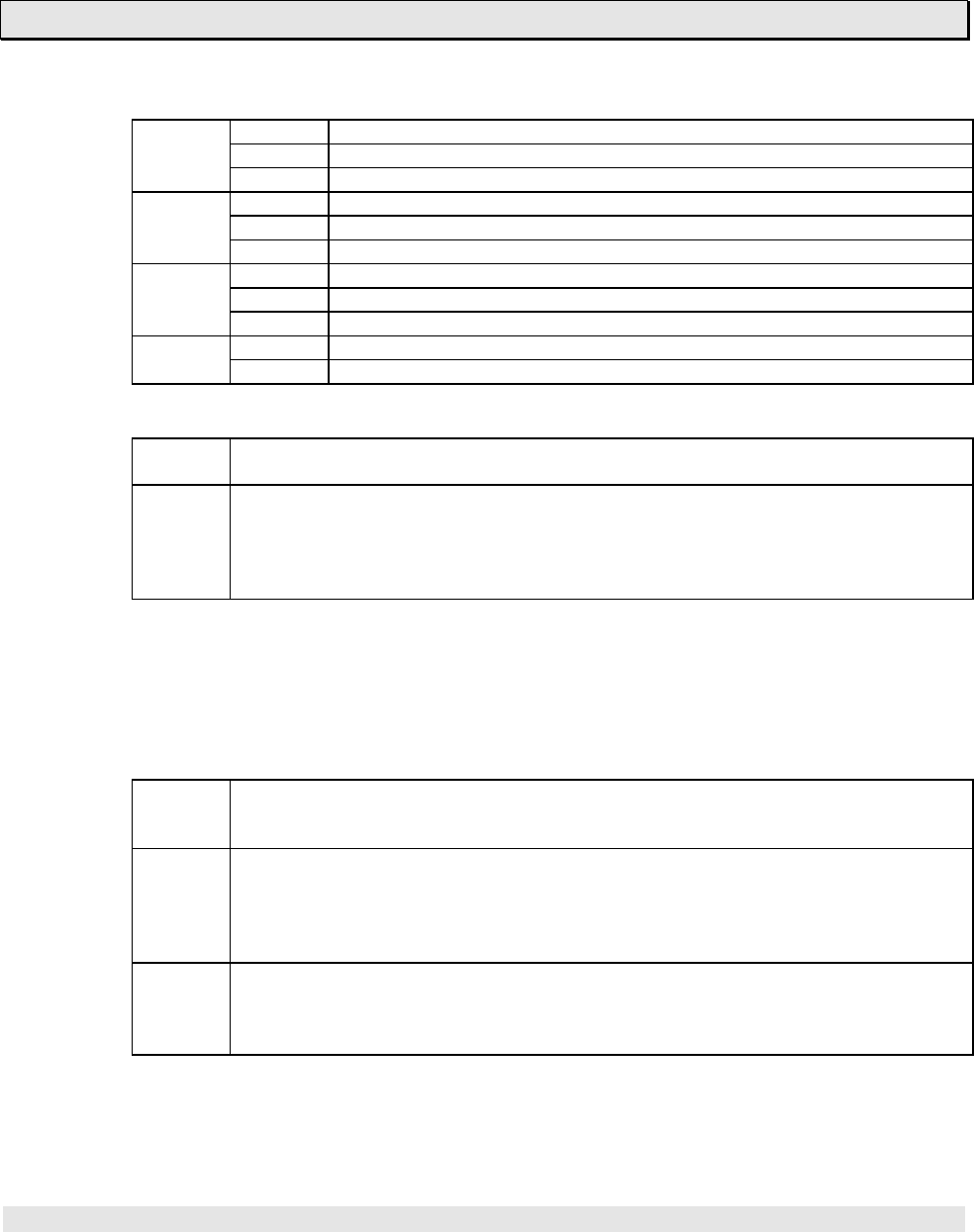
User’s Manual
13
1. T3H Overview
Status LEDs:
RUN Lit User program is being executed (RUN mode)
(green) Blink User program execution is stopped (HOLD mode)
Not lit User program execution is stopped (HALT or ERROR mode)
FAULT Lit CPU or program error
(red) Blink Hardware initialization error
Not lit Normal
I/O Lit I/O error
(red) Blink Hardware initialization error
Not lit Normal
BATT Lit Battery voltage is normal
(green) Not lit Battery voltage is low (battery replacement is required)
RAM/ROM switch:
RAM User program stored in RAM is used.
(Program transfer from EEPROM to RAM is not executed)
ROM At the beginning of RUN mode, user program stored in EEPROM is transferred to
RAM. (It is called Initial load)
If an IC memory card which contains user program has been installed, the IC
memory card becomes transfer source.
(If mode control switch is in P-RUN, the initial load is not executed)
Note) In case of T3, the RAM/ROM switch has the function of auto-RUN/standby
selection in addition to the initial load selection.
However, in case of T3H, the RAM/ROM switch only has the function of initial
load selection as mentioned above.
Mode control switch:
HALT User program execution is stopped. (HALT mode)
Normally, programming is performed in the HALT mode.
T3H operation mode control by programmer is not allowed.
RUN T3H executes user program cyclically. (RUN mode)
It is the normal switch position under operation.
Even in the RUN mode, program changes are possible. However, saving into the
EEPROM is available only in the HALT mode.
T3H operation mode control by programmer is possible.
P-RUN T3H executes user program cyclically. (RUN mode)
User program and the leading 4 k words of D register (D0000 to D4095) are write-
protected.
T3H operation mode control by programmer is possible.
Note) In case of T3, even in P-RUN, data writing into D0000 to D4095 by instruction
is allowed except for some instructions.
However, in case of T3H, data writing into D0000 to D4095 by instruction is
inhibited if in P-RUN.
